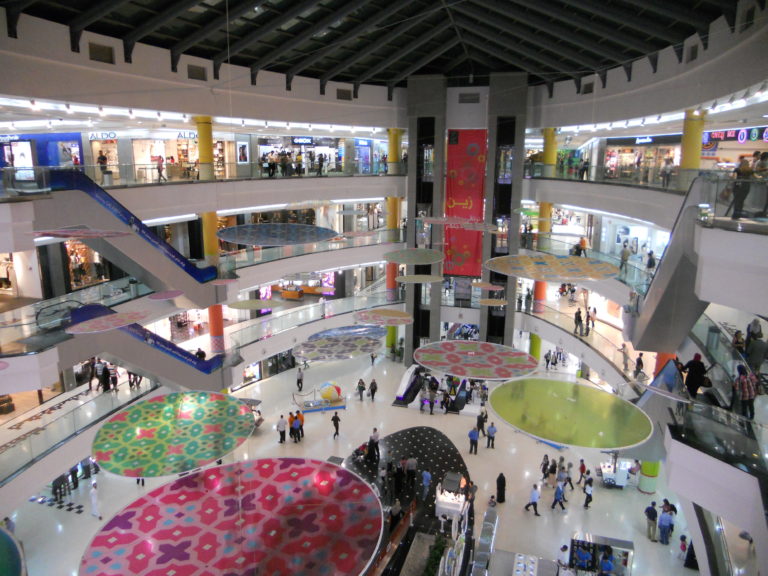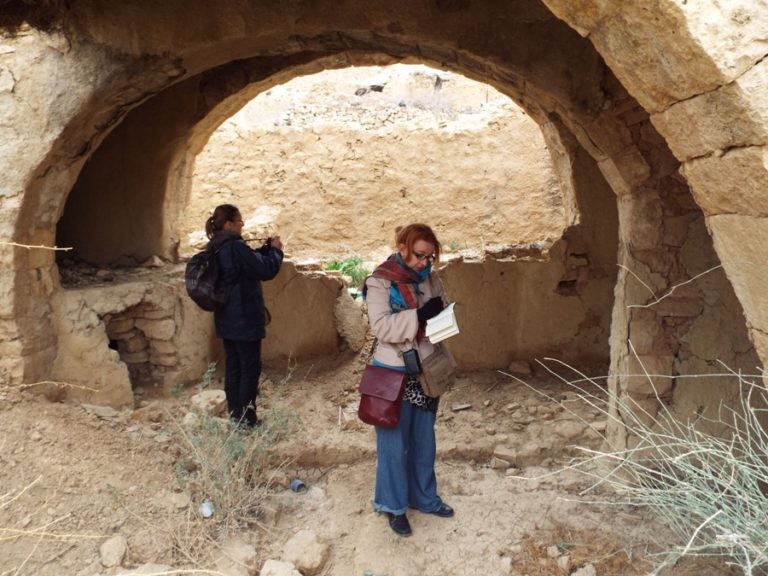by Alex Bellem and Carol Palmer.
In discussions relating to Arabic, an apparently simple question that is often overlooked is ‘What is Arabic?’
We can begin to answer this by remarking that there is no ‘Arabic’ in the singular, but – rather – that ‘Arabic’ is a cover term that covers multiple Arabics, in the plural. Standard Arabic, both Modern and Classical – in Arabic, fuṣḥā – is a standardised language variety which people generally learn at school, via the media, and through religious teaching; it is not a natively spoken variety. There are different levels of the standard language and, in addition, the (modern) standard may vary regionally. Classical Arabic fuṣḥā always was a ‘high’ literary variety, and in this sense an idealised form. Fuṣḥā exists alongside natively spoken varieties of Arabic, or vernaculars, generally referred to as the dialects of Arabic, but it is not the origin of the natively spoken dialects.
It is oversimplistic to view this sociolinguistic situation as one of pure diglossia. Rather, many linguists see it as a continuum between a vernacular dialect at one extreme end and high Classical Arabic at the other, with various degrees of mixing in between.
The natively spoken linguistic systems of Arabic – the vernacular dialects – have multiple origins that appear to have deep historical roots. These dialects are most often classified into five broadly geographical groups of closely related dialects: the Arabian, the Mesopotamian, the Levantine, the Egyptian, and the North African (Maghribi). Each of these groups is then further sub-classified in various ways into sub-groups of dialects.

However, it is also recognised that the vernacular dialects reflect the diverse origins and ways of life of the peoples of many regions of the Arabic-speaking world. This is partly reflected in the traditional classification system shown above, in which the Arabian dialect group includes not only contemporary dialects of the Arabian Peninsula, but also Bedouin dialects spoken elsewhere that are closely related, due to historical waves of migration. Bedouin dialects are spoken across the Levant, including by people of Bedouin origin in various parts of Jordan. But this is only a partial reflection of the complex linguistic landscape of much of the Middle East. An important factor in dialect classification relates to all three major traditional lifestyle types that have been prevalent in the region, and is particularly relevant here in Jordan – these ways of life, and indeed identities, are: urban, rural and Bedouin. Therefore, for the primarily geographically identified classification shown above, we need to add that the Arabian group includes Bedouin, while other groups related to sedentary communities may split fundamentally between urban and rural, before the geographical variations then come into play. We can also observe that the urban–rural–Bedouin classification is also somewhat of a continuum, with dialects displaying different degrees of mixing of urban–rural or rural–Bedouin features.

There are huge and increasing changes to this ecological system in the modern era, however, as a result of migration to urban areas, expansion and urbanisation of rural settlements, and the rapid development of modern communication systems. We could also look at this in terms of ‘modernity’, in its various aspects, and the associated prestige factor. This has a knock-on effect of the dialects, as expressions of cultural identity. So we see for instance that rural dialects may be losing certain linguistic features that mark them as typically rural, certainly in the speech of many younger people. The changes are in favour of features that are more typically urban, since the urban dialects are more socially prestigious.

To some extent, there is also some prestige associated with ‘Bedouin’ as an identity and thus applied also to features of speech associated with Bedouin dialects. This is due to ‘Bedouin’ as an identity being associated in a sense with masculinity and toughness (the prototypical alpha male); this may seem somewhat stereotyped, but is a known feature of the new urban Amman dialect that has developed in very recent times. There is a very salient difference in male–female speech in Ammani Arabic, which is that females have the urban Levantine pattern of a glottal stop [ʔ] that equates to Standard Arabic <q>, while for males this consonant is [g], which is the realisation that is associated with the traditional Jordanian Bedouin dialects. Therefore, the word for ‘heart’, which in Standard Arabic is <qalb>, is spoken by Ammani females as ʔalb, but by Ammani males as galb. Young boys are stigmatised for using the [ʔ] as they grow older, and explicitly told to ‘be a man’ and use [g].[1]
Bedouin identity in Jordan is associated not just with masculinity, but also harks back to the formation of Jordan as a modern nation state; its ‘cultural heritage’ value, which is further reinforced through tourism, is tied in with ‘Bedouin’ as the origin of what it is to be ‘Arab’, and in this sense transcending the narrow Jordanian interest to have pan-Arab appeal. Therefore, an overt Bedouin feature of speech lends it some prestige, although it must be noted that this is limited. For instance, the modern young urban man may have some Bedouin features of speech (e.g. the [g], and some words), but other Bedouin features will be absent; he may appreciate a Bedouin heritage, but he won’t live a Bedouin lifestyle, and he is unlikely to marry a woman who could be broadly called Bedouin.

So we can see that urban dialects are comparatively prestigious, and some Bedouin speech features also have prestige, which affords robustness, although here too the dialects continue to evolve naturally. But the rural dialects are not credited with such prestige, as identity markers associated with the old countryside lifestyles which are generally not socially valued, in part reflecting the loss of traditional agriculture as a viable livelihood option, in part reflecting the harsher ways of life that are giving way to modernity. Thus, with the loss of the rural lifestyle – within which is the rural dialect type – comes the loss of the rural identity. Since rural identity is non-prestigious, its loss is often written off as unimportant, or its importance is unnoticed.
To some extent, rural dialects encapsulate valuable local knowledge, at least in terms of lexicon, that is, the culturally specific words associated with given dialects. This may relate to, for instance, management of specific environments and the devising of ecologically sensitive solutions, especially with regard to water use, soil conservation and biodiversity. Many agricultural terms are inherited from other Semitic languages, such as Aramaic, the meanings of which are also being lost. In addition, the rural dialects of Jordan encapsulate the “desert meets the sown”, with the long history of mixing of agrarian and nomadic pastoral ways of life. The different extents of mixing inherent in various of the rural dialects – e.g. rural, with Bedouin features, or historically Bedouin but with sedentary (rural) features – can afford us deeper insights into population movements through time.

We must not forget that a dialect is much more than a list of words, and it is not only in lexical inventory that rural dialects are rapidly changing. Very simplistically, a language system comprises syntax (sentence-building), morphology (word-building) and phonology (regular sound patterning) in addition to lexico-semantics (words and their meanings). Fundamentally, rural dialects are changing not just their stock of culturally specific words in a linguistically arbitrary manner, but also displaying regular changes in linguistic features – syntactic features, morphological features, and phonological features. It is these features of rural dialects that are often adapting to the features that are typical of the urban dialects. And in this way, the rural dialects may well be not simply evolving in the way that the urban dialects are, but potentially dying out.
A last corollary of focussing on the non-prestigious cultural identities – of which the vernacular language variety is one aspect – is the possibility of bringing the spotlight onto some of the least visible communities, typically women and minority groups, such as the people of the Jordan Valley, or Ghor, who fit neither the Middle Eastern peasant nor Bedouin stereotypes. The vernacular dialect is an enormous part of their cultural identity and heritage, but being intangible means that it is often overlooked in the effort to document and preserve cultural heritage that is so often focussed on the tangible. Documenting rural Jordanian dialects and investigating the ways in which they are changing linguistically, and the extent to which they are dying out, is becoming increasingly urgent as the generations of people who knew and lived these traditional rural ways of life pass away.

Dr Alex Bellem is currently Lecturer in Arabic in the School of Modern Languages and Cultures at Durham University. She has held academic posts at the University of Salford (2010–11) and the CBRL, where she was Research Director (Syria) from 2008–10; she previously taught at SOAS and has worked for the BBC’s Pronunciation Research Unit. Between January and April 2016, she held a CBRL Senior Visiting Fellowship at the British Institute in Amman, while on research leave from Durham University, and she is currently (autumn 2016) making use of the BIA library again while in Jordan this term. Her research is in the area of comparative and theoretical phonology and phonetics, Arabic dialectology, and Semitic languages and languages of the Middle East and contiguous regions.
Dr Carol Palmer is Director of the British Institute in Amman, the Council for British Research in the Levant’s research centre in Jordan. Her research focuses on rural ways of life of the Levant and understanding the massive changes that people have experienced within the last two to three generations. Most recently, with colleagues from the Bournemouth University, she has been conducting a project on the abandoned villages of southern Jordan, specifically at al-Ma’tan.
We are grateful for all the assistance and hospitality we have received at various stages of this research from families, friends and contacts in the southern Ghor, al-Tafilah, Ma’an, Wadi Musa and al-Ramthah, as well as advice and support from colleagues at the Princess Basma Bin Talal Center for Intangible Cultural Heritage in Wadi Musa and SOAS (University of London), UK, in this endeavour.
[1] Interestingly, this is also a feature of rural speech, as opposed to urban. However, other features of speech that are both rural and (often) Bedouin are not adopted by urbanites because they are associated more with rural speech (i.e. that they may also be Bedouin is not a salient feature). For instance, the realisation of the consonant <k> as č (i.e. ‘ch’).
The views expressed by our authors on the CBRL blog are not necessarily endorsed by CBRL, but are commended as contributing to public debate.














